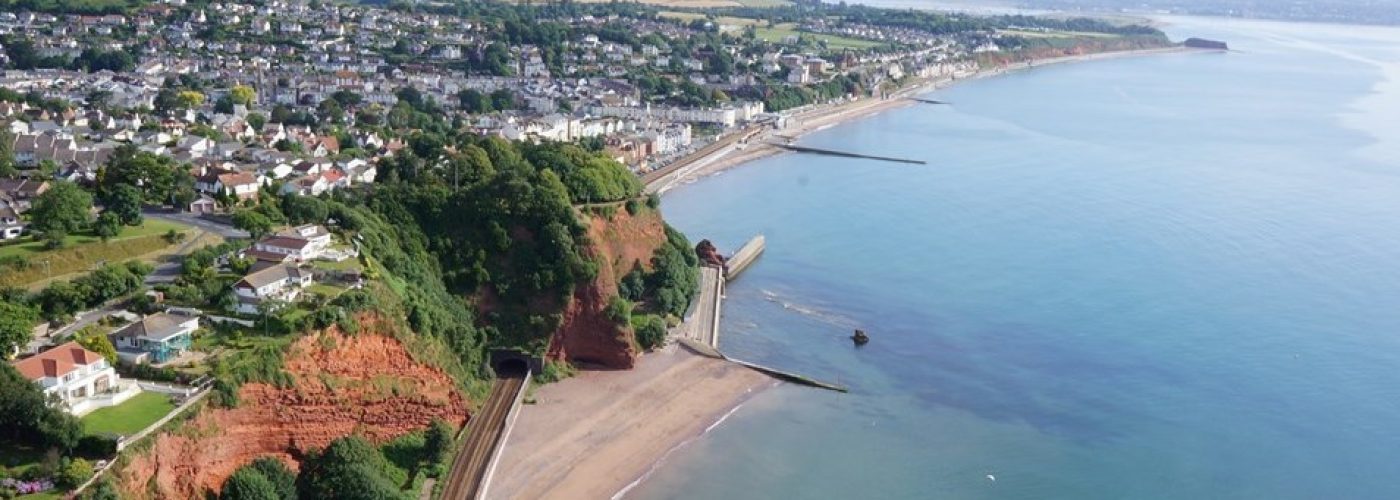Bam Nuttall has launched a £37.4 million cliff resilience project on behalf of Network Rail, designed to protect an iconic coastal railway line for future generations. Following BAM’s successful delivery of Dawlish sea wall, the team’s focus will move to cliffs between Dawlish and Holcombe, further increasing the resilience of this vital rail link to the South West.
The project will involve the installation of a series of protection measures, including netting designed to retain the cliffs in some high-risk locations, as well as catch fences, which will stop any cliff material before it reaches the railway.
The £34.7m government-funded project involves installing coir matting on the cliff face, followed by 19,700 square metres of stainless steel netting, secured by more than 6,000 soil nails drilled to depths of up to 13m into the face of the cliff.
In an innovative move to deliver best value, the nails are part stainless and part galvanised steel. The galvanised part of the nails will be deeper in the cliff, so will be protected from corrosion.
In the areas that fall within the Dawlish Cliffs Site of Special Scientific Interest (SSSI), temporary grey/blue matting will be installed over the cliff face for the safety of workers, which will be removed once the netting is installed. Coir matting won’t be installed in this area, so that as much of the cliff face as possible can still be seen.
The work is expected to take until spring 2024.
Alan Cox, BAM managing director of regions and transport, said:
“BAM is delighted to be continuing to increase the resilience of this vital rail link to the South West. Ever since the original emergency repair work in 2014, we have established strong connections with both local supply chains and local businesses to ensure maximum benefit is derived from the scheme in the local area.
“The wide variety of engineering solutions needed to achieve this resilience in a very challenging environment plays to our strengths. Together with Network Rail and the local stakeholders we aim to continue to deliver best value whilst minimising disruption to passengers and public alike.
“The people of Dawlish have been incredibly supportive of our work to date, something that makes our work even more rewarding.”
Network Rail senior programme manager Ewen Morrison said:
“The work is part of the wider South West Rail Resilience Programme, which was set up following the storm of 2014 to help protect the railway between Dawlish and Teignmouth from the effects of extreme weather. It follows on from the construction of the new sea wall at Dawlish and the rockfall shelter just north of Parson’s Tunnel, which is nearing completion.
“Most of the work will take place during the day but some activity can only be safely done on Saturday nights when trains aren’t running and we’d like to thank the community for their patience as we continue our work to protect this vital rail artery.
“We are conscious of how special the red cliffs are for residents and visitors, and we are working with Natural England on the areas that fall within the Dawlish Cliffs SSSI.”
Transport Secretary Mark Harper said: “After officially opening the new sea wall in Dawlish earlier this month, I’m delighted the next phase of this vital project is now ready to begin.
“Backed by Government funding, the resilience programme is protecting this crucial route from extreme weather resulting in more reliable train journeys for passengers while boosting connectivity and growing the economy across the South West.”
Building, Design & Construction Magazine | The Choice of Industry Professionals





